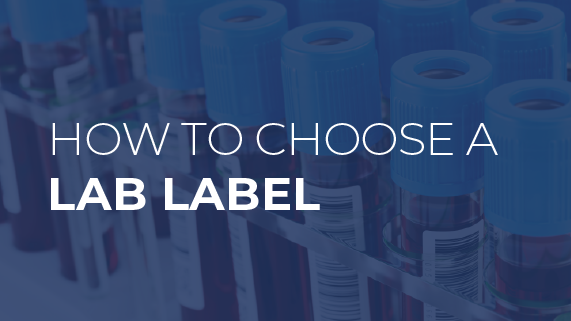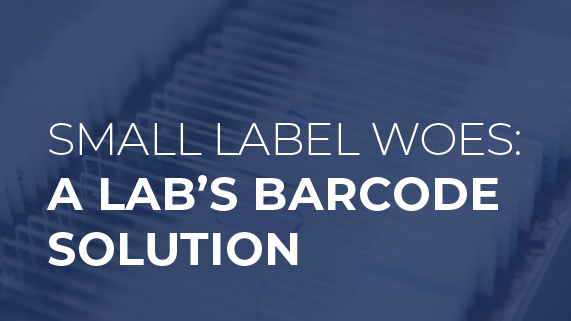Labware Identification
-
Lab Uses Barcode Comparator to Reduce Specimen Labeling Errors [Case Study]
Large Healthcare Provider in Minnesota Uses Barcode Comparator to Reduce Specimen Labeling Errors During Aliquoting Case Study: Barcode Comparator Solution The Problem A large healthcare provider in Minnesota noticed an unprecedented number of incidents in which their lab had provided incorrect results to their patients. They documented 12 incidents over a 30 day period, which were only discovered because a... -
Laboratory Labels: What Material is Best?
Laboratory Labels: What Material is Best? Not every label is suitable for laboratory use. Extreme temperatures alone are enough to cause some labels to peel off. And only the most robust materials can withstand xylene, acetone, and other chemicals used during lab work. In general, the hazards labels face in the lab can be broken down into three categories: high... -
Barcodes in the Lab
Barcodes in the Lab Barcodes are synonymous with specimen labeling accuracy. Barcoding systems are four times less likely to produce errors than manual entry methods. 1 Because of this, barcodes are more common in laboratories now than ever before. Specialized barcode systems help improve every aspect of the laboratory workflow. Whether you're looking to improve your laboratory management system or... -
How to Choose a Lab Label
How to Choose a Lab Label Through autoclave and freezer, no label is quite so tough as the mighty lab label. Where other labels would peel off, smudge or fade, lab labels remain affixed and legible, silent guardians of the samples they identify. If you're looking for such a label and you're not quite sure where to start, below you'll... -
Small Label Woes: A Lab's Barcode Solution
Small Label Woes: A Lab's Barcode Solution Not all barcodes are created equal. There are two main types: 1D and 2D. This vial label has both a 1D barcode (right) and 2D barcode (left). You see 1D barcodes everywhere. This isn’t surprising, because they work for most labeling solutions. But what happens when a standard, 1D barcode won’t work? This...
![Lab Uses Barcode Comparator to Reduce Specimen Labeling Errors [Case Study]](https://aul.dasco.com/media/wordpress/5a50e3f43dd65827ae3d6d514e1ca5fb.png)



